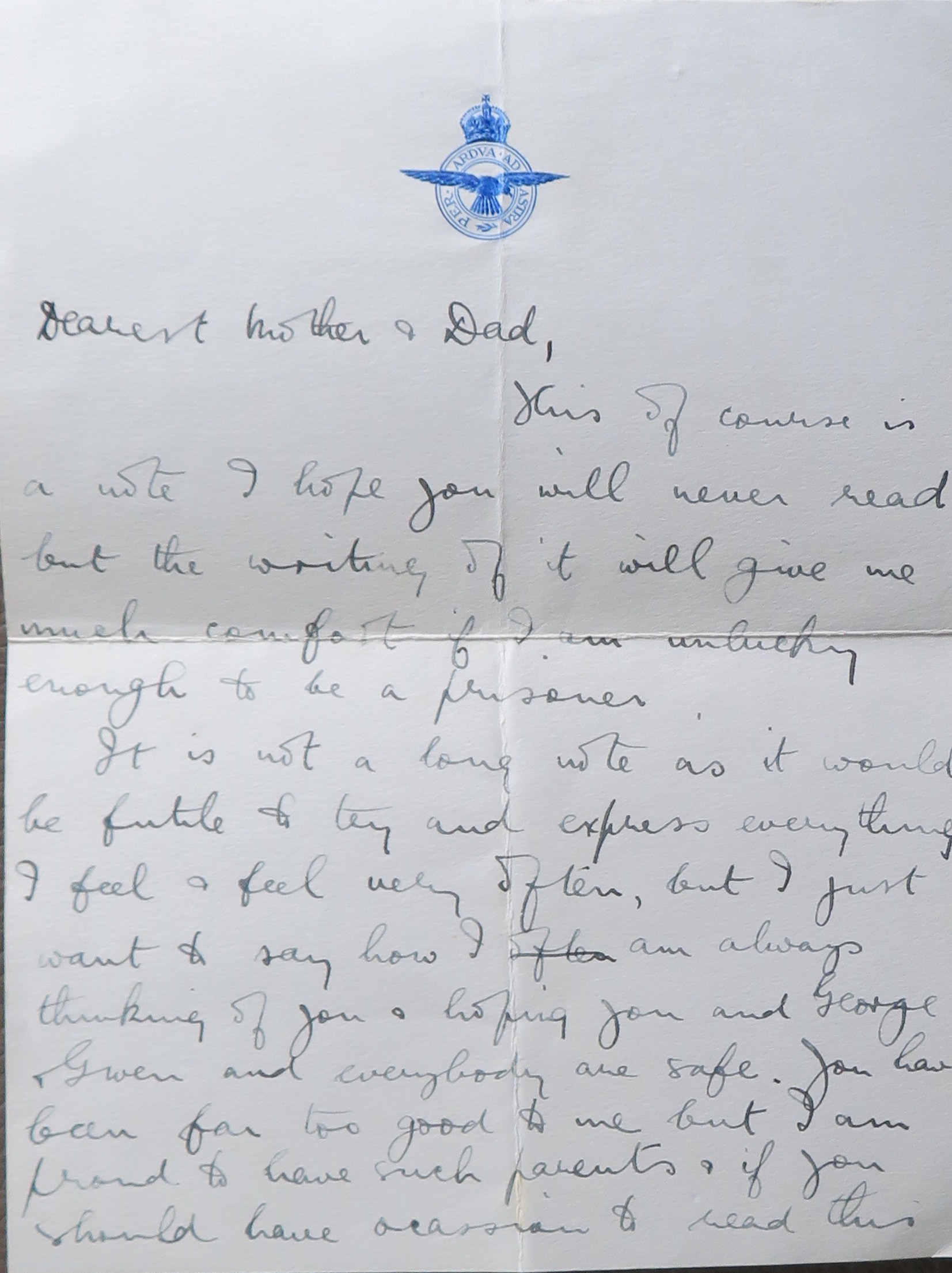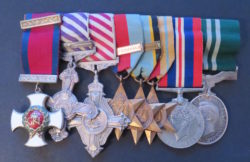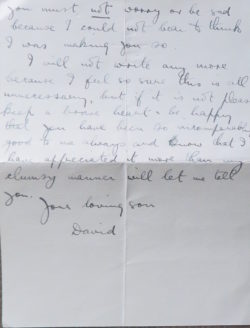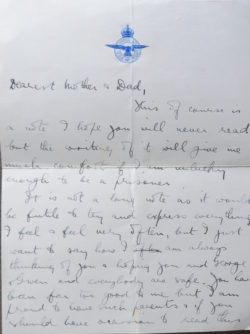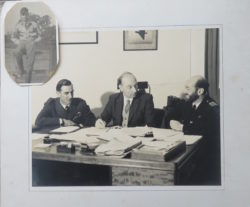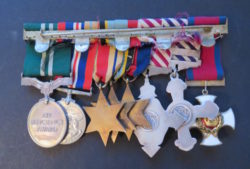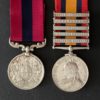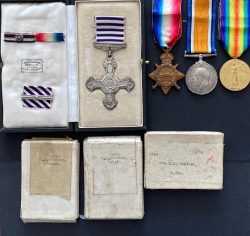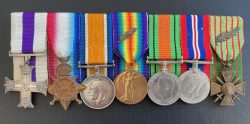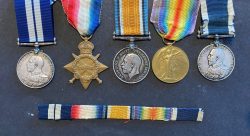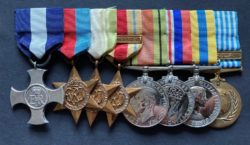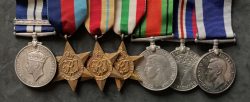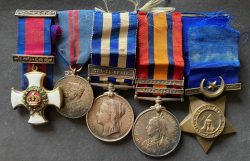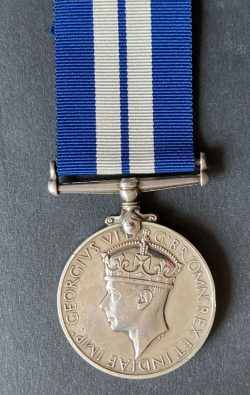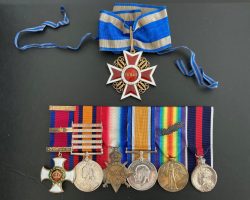D.S.O. (GV1), D.F.C. & Bar (GV1), (all immediate awards) A.F.C. (E11R) as test pilot Boscombe Down, with AirEfficiency award. A stunning group by combination and absolute quality of all awards. 105 ops all 21 Sqdn. (Blenheim/Mosquito)
£19,500.00
1 in stock
SKU: A8351
Category: Awards For Gallantry And Distinguished Service
Distinguished Service Order, (GVI), silver-gilt and enamel, reverse 1943, Distinguished Flying Cross, (GVI) reverse 1941, with Second Award Bar, reverse 1944, Air Force Cross, (EIIR), reverse 1959, 1939/45 Star, clasp, Bomber Command, Air Crew Europe Star, clasp, France and Germany, Africa Star, War Medals, Air Efficiency Award, (GVI), 1st issue (Act. Flt. Lt. R.A.F.V.R.)
Group Captain D. F. Dennis
Mounted as originally worn
With copies of the recipient’s eight log books. The originals being held by the Imperial War Museum
Together with :-
Bestowal Document for the award of the D.F.C., dated 18/5/1943; Commission appointing recipient as Squadron Leader, dated 11/4/1947; enclosure slip for Bomber Command clasp; recipient’s R.A.F. Identity Card, complete with photograph of him in uniform, Great Britain and Northern Ireland Air Ministry Certificate of Competency and Licence to Fly Private Flying Machines, two R.A.F. Instrument Pilot Rating Certificates; R.A.F. Driving Permit, Royal Saudi Air Force Identity Card, two University of London Matriculation Certificates, letter from recipient to parents in the event of his death, on R.A.F. letter-headed paper; two letters to recipient from the Private Secretary to Queen Elizabeth The Queen Mother on Clarence House paper, (1954), letter to recipient from Air Marshal Sir Basil Embry, (1950), Order of Service for recipient’s funeral; newspaper cuttings, family photographs and other, ribbon bars and cloth insignia;
Excessively rare of awards, in a service career least 105 operational sorties, in Blenheims, Venturas and Mosquitoes, all of which were with 21 Squadron, the latter he commanded from July 1944.
Dennis accounted 8,000 tons + of enemy shipping whilst based on attachment at Malta in May 1941, took part in the famous and daring low-level raid on the Philips radio and valve factories at Eindhoven, 6/12/1942, and attacked and damaged the transporter bridge across the Seine at Rouen, 26/8/1944 – from minimum altitude and despite running the gauntlet of the 54 light A.A. guns in the vicinity. After the war he went on to serve as a Test Pilot at A. & A.E.E., Boscombe Down
D.S.O. Acting Flight Lieutenant, D.F.C. (64274), Royal Air Force Volunteer Reserve, No. 21 Squadron.
L.G. 18/5/1943
‘This officer has participated in 53 sorties, invariably displaying exceptional skill and determination. One afternoon in April, 1943, he flew the leading airciaft of a bomber formation detailed to attack railway installations at Abbeville. During the operation much fighter opposition was encountered and his formation was subjected to simultaneous attack from the rear and ahead. In the engagement. Flight Lieutenant Dennis displayed inspiring leadership, proving a tower of strength. By his personal example and sterling qualities, this officer has contributed materially to the high standard of morale and efficiency of the squadron. ‘
The original recommendation expands :
‘On the afternoon of 21st April, 1943, F/L Dennis was detailed to lead an attack of twelve aircraft on Abbeville marshalling yards. They were intercepted by a large number of enemy fighters over the target, and the fighter escort was soon fully engaged.
F/L Dennis’ box of six was singled out for an attack from both stern and ahead simultaneously, with no assistance from our fighters. Three of his formation were shot down, and it was only by his cool headedness, and skill in evasive action, that prevented the complete annihilation of the box of six.
This officer has done an exceptional job of work in this Squadron during his two tours of operations. He has always shown the greatest enthusiasm for operations, and has lead formations with excellent results in the past. It is considered that he is largely responsible for the very high morale and efficiency in the Squadron, in spite of recent fairly heavy casualties.
Covering remarks by Station Commander:
21 Squadron has only recently been transferred to me from Feltwell and my personal knowledge of Flight Lieutenant Dennis’s operational record is not yet extensive. I am already convinced, however, that here is an operational leader of the very first class. I feel that the Squadron Commander’s citation scarcely indicates, with due emphasis, the exceptional qualities of courage, mature experience and outstanding leadership which have characterised Flight Lieutenant Dennis’s long and distinguished operational career. With this background I endorse the recommendation for the immediate award of the D.S.O. for the qualities of leadership displayed in this most recent operation.’
D.F.C. L.G. 10/6/1941
Pilot Officer, Royal Air Force Volunteer Reserve, No. 21 Squadron.
‘This officer has displayed great skill and daring in attacks against enemy merchant ships and escorting vessels. In May, 1941, he attacked a merchant vessel of about 5,000 tons, obtaining hits which caused the ship to founder. The next day he attacked and secured hits on an enemy destroyer sloop. A few days later he executed an attack against a merchant ship in convoy and, as a result of his bombing, the ship took a list to starboard emitting much black smoke. On all these occasions, Dennis showed the greatest determination.’
The original recommendation expands:
‘Whilst on overseas duty engaged on intercepting an enemy convoy moving between Sicily and the North African Coast, this officer showed great daring and skill in attacking both merchant vessels and accompanying naval ships.
On May 1st, when ordered to intercept a merchant vessel of 5,000 tons, he secured hits, which caused the ship to founder. Subsequent reconnaissance confirmed that the vessel was lying on its side below water.
On May 2nd when ordered to intercept a convoy he attacked a Destroyer or Sloop of 1,000 to 1,200 tons, and secured hits on it. A subsequent attack was made on a CANT Z301 Flying Boat, but no damage was observed.
One again, when on May 7th, he was ordered to intercept a convoy, he secured hits on a merchant vessel of 2,000 to 3,000 tons. The ship took on a list to starboard and emitted much black smoke. This was confirmed by crews of escorting Beaufighters.
On each of these occasions, this officer showed great determination in his attacks, and it is most strongly recommended that he should receive an immediate award.’
D.F.C. Second Award Bar L.G. 27/10/1944.
Acting Wing Commander, D.S.O., D.F.C. (64274), R.A.F.V.R., 21 Sqn.
‘Wing Commander Dennis has commanded his squadron with marked success. One night in August, he was detailed for a particularly hazardous attack on a transporter bridge across the Seine. The enemy defences in the area were extremely heavy. Disregarding the opposition this officer led his aircraft in to the attack scoring hits with his bombs. Wing Commander Dennis has completed very many sorties including numerous night attacks. His leadership, initiative and courage have been of a high order.’
The recommendation expands:
‘W/Cdr. Dennis has now completed over 40 sorties in his present operational tour, including high and low level daylight operations, ‘Flower’ sorties, and skilful and determined night attacks in connection with the battles of France. He has always placed himself in the forefront of any particularly difficult operation.
On the night of 26th August [1944] it was required to damage as severely as possibly the transporter bridge across the Seine at Rouen. Although it was known that there were 54 light A.A. guns close to this area W/Cdr. Dennis attacked under flares from minimum altitude, and disregarding the opposition led his aircraft in to the bridge, scoring hits with his bombs.
For this daring and skilful attack I recommend him for immediate award of the bar to the Distinguished Flying Cross.
Remarks by Air Officer Commanding H.Q. No. 2 Group [Basil Embry]:
I strongly endorse this recommendation. Wing Commander Dennis carried out a most resolute and successful attack on the transporter bridge across the Seine on the night of 26/27th August, 1944, at Rouen in the face of intense A.A. fire. This was a most hazardous task, well carried out, and he richly deserves immediate recognition. In addition, Wing Commander Dennis, in his third operational tour has commanded his Squadron with marked success. I strongly recommend him for the immediate award of a Bar to the D.F.C.’
A.F.C. L.G. 13/6/1959.
David Foster Dennis was born in Abingdon, Berkshire in March 1915. He was educated at Blandford Grammar School, Dorset. Dennis gained Private’s Pilot’s January 1939. He joined the RAFVR in 1937. He carried out pilot training at No. 5 F.T.S., Sealand, and advanced to Sergeant. Dennis briefly served with 108 Squadron in March 1940, before serving as an instructor in Blenheims with No. 13 O.T.U., Bicester, March – September 1940. He served at No. 4 R.S.S., Church Fenton, before being posted for operational flying to 21 Squadron (Blenheims) at Watton, in January 1941, engaged in offensive strikes against shipping in the English Channel and the North Sea, and targets on the Continent
Dennis flew in at least 25 operational sorties with the Squadron between January – June 1941, including whilst on attachment during the seige of Malta during May of that year. Promoted Pilot Officer, and flew in a mixture of day and night operational sorties, including: Amsterdam; Cologne; Hanover; Wilhelmshaven (3); Bremen; Hamburg; Lorient; Denmark; Flushing and various offensive shipping patrols, such as 1 May 1941 ‘Sank 5,000 ton M/V. Hit two shells etc’, 2 May 1941 ‘Secured Hit on Destroyer’, and 7 May 1941 ‘Secured Hit on M/V 2,000-3,000’ (from Log Book).
Dennis finished his tour with 21 Squadron after returning from Malta at the end of May 1941. He was awarded an ‘immediate’ D.F.C., and posted for a rest as an instructor at No. 13 O.T.U., Bicester, the following month.
He was posted back to 21 Squadron (Venturas) at Bodney, in July 1942 as Flying Officer. in daylight operations Dennis flew in at least 34 operational sorties with the Squadron between July 1942 – August 1943. These included: Hengelo, 3/11/1942 – the first operation carried out in the new Lockheed Ventura; Ghent; Eindhoven, 6/12/ 1942 – the famous and daring low-level raid carried out by all of the operational day-bomber squadrons in No. 2 Group on the Philips radio and valve factories; Den Helder naval installations (2); Ijmuiden steelworks (3); Abbeville marshalling yards (3), including 21/4/1943, when Dennis lead a formation of 12 Venturas during the raid, 3 of which were shot down (see D.S.O. recommendation); Dunkirk (2), including 26 February 1943 when he led the Squadron during an attack for the first time; Rotterdam; Brest (2); Zeebrugge; and Caen (2).
Having finished his second tour with 21 Squadron at the end of August 1943, Dennis was awarded an ‘immediate’ D.S.O. and advanced to Flight Lieutenant. He returned to No. 13 O.T.U. at Bicester as a Flight Commander and instructor in Mitchell aircraft in September 1943.
Dennis returned as Squadron Leader to 21 Squadron for his third operational tour, now operating Mosquitoes, in May 1944. Operating out of Gravesend, the Squadron was employed on high and low level daylight operations, and night attacks in connection with the battles of France. During this tour with the Squadron Dennis was promoted Wing Commander, and commanded the squadron from July 1944, and flew in at least 46 operational sorties with the Squadron between May – September 1944.
On the night of 29/7/1944, having carried out a raid over southern Germany, Dennis’s Mosquito was hit by flak. It put one engine out of action and he was forced to crash land in darkness near Caen. The aircraft was a write-off, but both he and his navigator returned to the air the following night. Dennis carried out a daring planned attack on the transporter bridge across the Seine at Rouen, 26/27 August 1944. Although it was known that there were 54 light A.A. guns close to this area Dennis attacked under flares from minimum altitude, and disregarding the opposition led his aircraft in to the bridge, scoring hits with his bombs (See D.F.C. Second Award Bar recommendation).
Having completed his third tour with 21 Squadron at the end of October 1944, Dennis was awarded an ‘immediate’ Second Award Bar to his D.F.C. He was then posted to the Staff at H.Q. No. 2 Group for the remainder of the war, and was awarded the Air Efficiency Award 25/4/1945. Having completed a Flying Instructor Course and the Day Fighter Leaders Course Dennis was appointed to the command of 111 Squadron (Spitfires) in the Middle East. He was then appointed Officer Commanding of R.A.F Udine, Northern Italy in 1947. After staff appointments at Group and Air Ministry level he was appointed Station Commander and Wing Leader at R.A.F. Honily. Having flown Vampires at the latter, and completing No. 8 Flying College course at Manby, Dennis was posted to A & A.E.E. at Boscombe Down in 1957. He flew as a Test Pilot with A Squadron, flying mainly Swift, Hunter, Javelin and Gnat aircraft, and was awarded the A.F.C. for his service.
As a Group Captain, Dennis served at 13 Group HQ, was a Station Commander at R.A.F. Bassingbourne, and served as Air Task Force Commander Brunei. He retired in May 1963, and died in Wiltshire in May 1986. He is buried at St. Mary Magdalene Church, Woodborough.
A stunning group.
